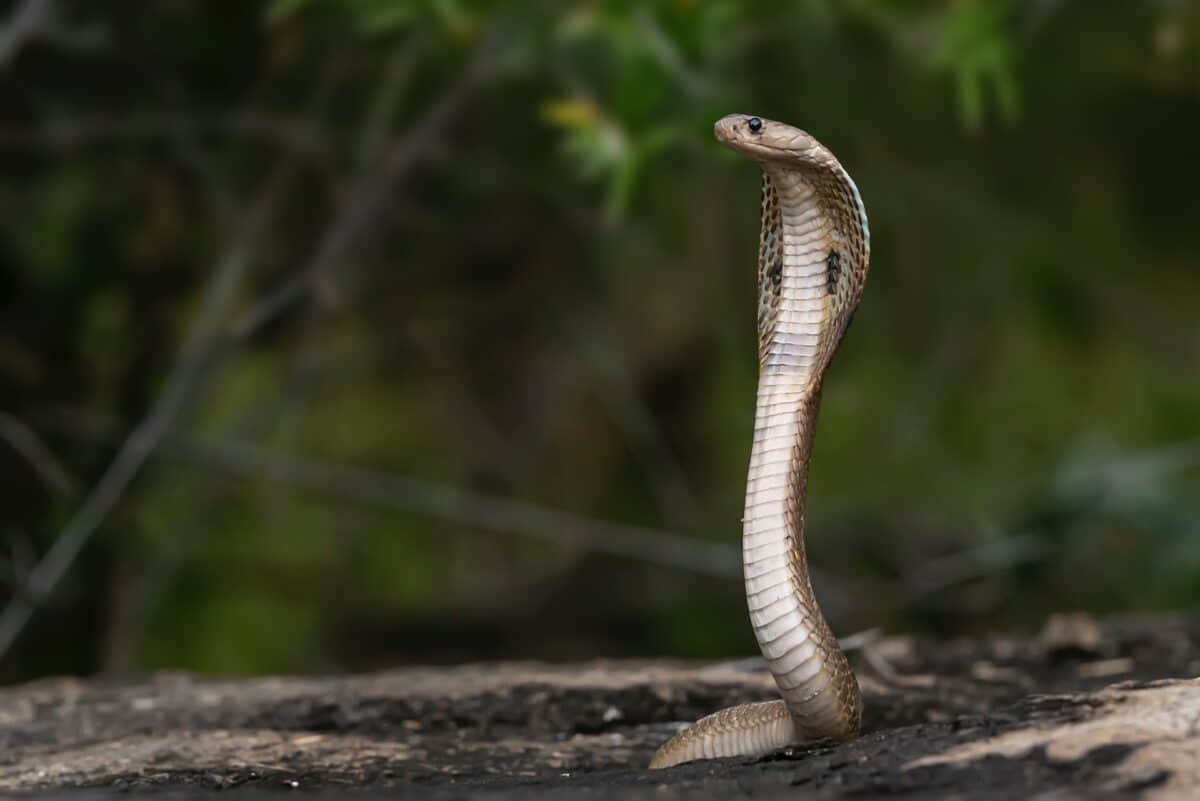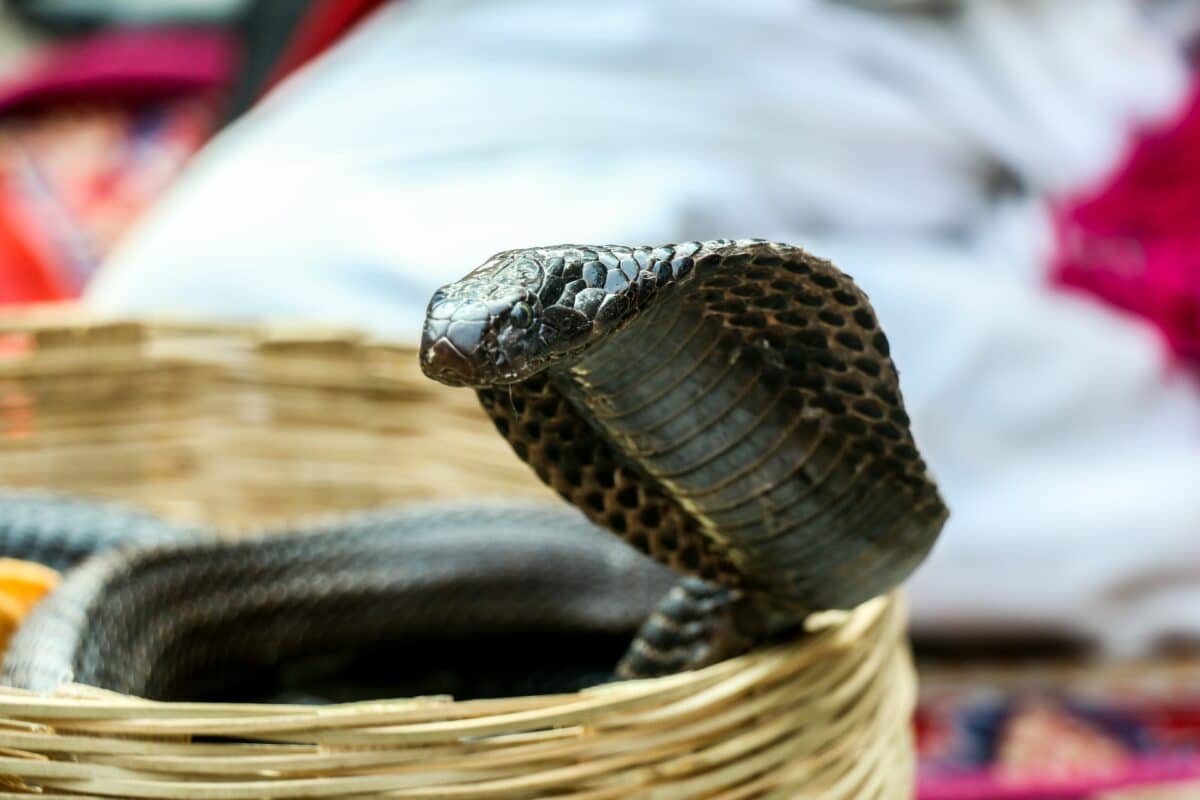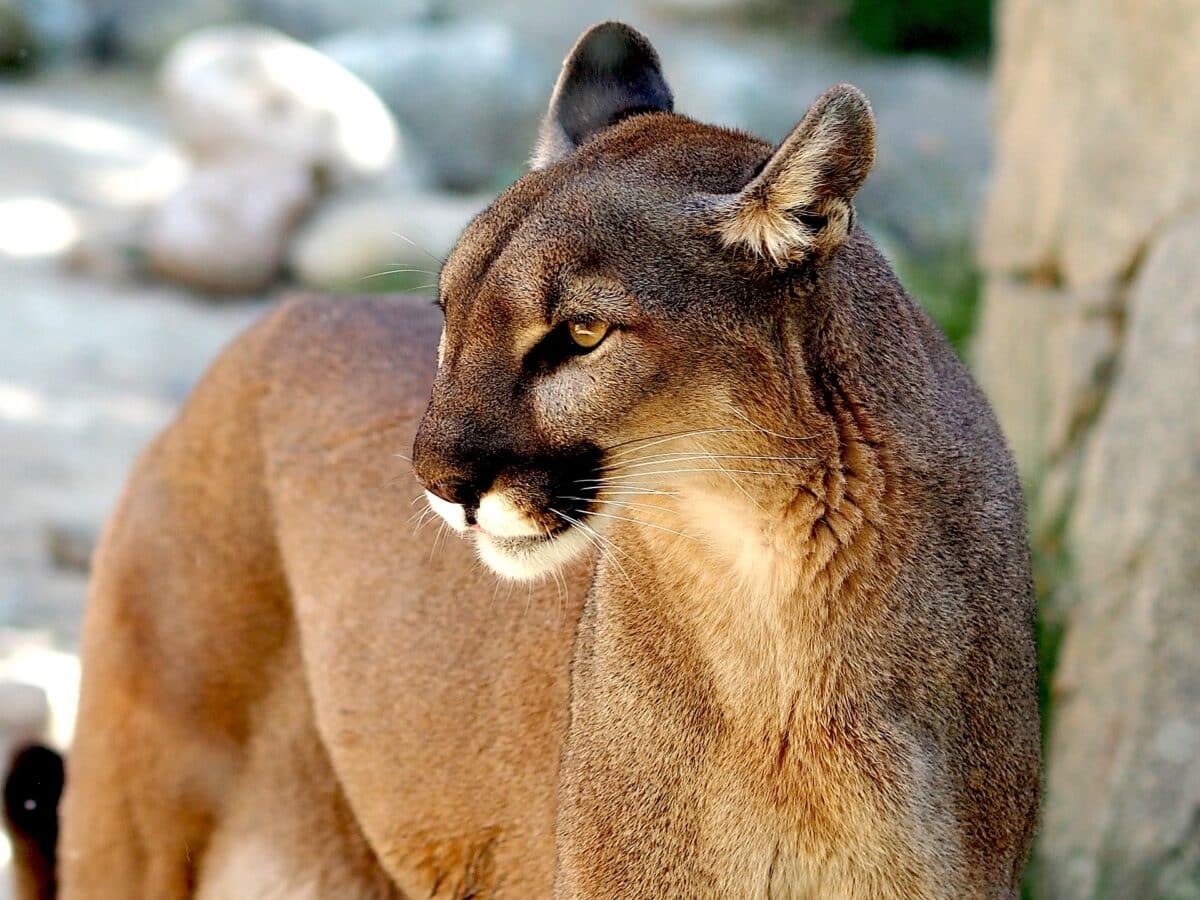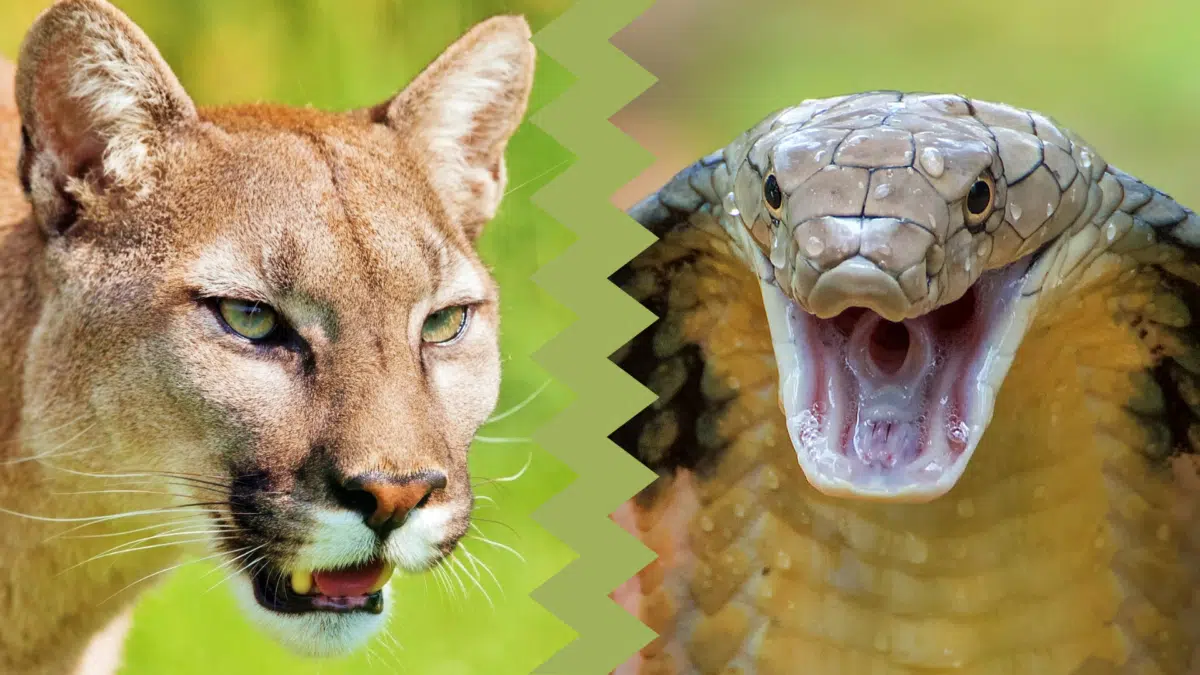Cobra vs. Puma: Cobras and pumas are two pretty amazing animals – each species exhibits unique physical and behavioral characteristics that make them far more interesting than any other animal.
Plus, both are skilled predators that have adapted to survive in their respective environments, and they are often the subject of comparisons in the animal enthusiast community.
Here, I will discuss the similarities and differences between these two animals. We shall answer the age-old question of which animal is more dangerous: cobra or puma?
Want to jump ahead? Click below
Comparison of Cobras and Pumas

While cobras and pumas may seem unlikely to pair and compare, they share some interesting similarities and differences.
| Cobra | Puma | |
|---|---|---|
| Bite | Ambush predators feed primarily on small mammals, birds, and reptiles | Uses jaws and teeth to bite |
| Size and strength | Typically weighs less than 20 pounds | Opportunistic hunters feed on a variety o,f prey including deer, elk, rabbits, and rodents |
| Habitat and distribution | Found primarily in Africa and Asia, prefer forests and grasslands | Widely distributed throughout the Americas, can be found in forests, mountains, and deserts |
| Behavior and diet | Ambush predators, feed primarily on small mammals, birds, and reptiles | Opportunistic hunters, feed on a variety of prey including deer, elk, rabbits, and rodents |
| Threats and conservation status | Opportunistic hunters, they feed on a variety of prey, including deer, elk, rabbits, and rodents | Face threats from habitat loss and fragmentation, not currently considered endangered by the IUCN |
Cobra Overview

Cobras are venomous snakes belonging to the family Elapidae. There are several species of cobras, including the Indian cobra, king cobra, and spitting cobra. Generally cobras are known for their iconic hoods, they use these to intimidate predators and prey.
Physical Characteristics and Appearance
Depending on the species, cobras have elongated bodies and can reach lengths of 18 feet. They can flare their characteristic hood to make themselves appear eve larger and more menacing. There are several hues of cobras, such as brown, green, yellow, and black.
Habitat
Cobras are distributed throughout Africa and Asia and, therefore, can be found in a number of different habitats. These include grasslands, desserts, and forests.
Behavior and Diet
Cobras are carnivorous and feed on small mammals, birds, and reptiles. Other snakes, especially small ones, are also in their possible eating chart. Most especially, they are known to hide until their prey is caught or catch the animals by ambush.
Threats and Conservation Status
Cobras face threats from habitat loss and human persecution. Some species of cobras, such as the king cobra, are vulnerable or endangered according to the IUCN.
Taxonomic Characteristics
| Kingdom | Animalia |
| Phylum | Chordata |
| Class | Reptilia |
| Order | Squamata |
| Family | Elapidae |
| Genus | Naja |
| Species | Naja naja, Naja kaouthia, Naja oxiana, and others |
Interesting Facts
Cobras are unique in that they can “spit” their venom at predators or prey from up to six feet. More interestingly, they can also grow pretty long – for example, the King Cobra can grow up to 18 feet long.
Learn more fun tidbits about this majestic animal with National Geographic’s coverage of the King Cobra.
Puma Overview

Pumas are large predatory cats that inhabit North, Central, and South America.
Physical Characteristics and Appearance
They are able to grow up to big sizes (often 9 feet or so, including the tail), Pumas are large cats with short fur that ranges in color from tan to reddish-brown, and they have distinctive black markings on their faces, ears, and tails.
Habitat
Pumas can be found in various habitats, including forests, mountains, and deserts. Moreover, their origin and current spread can be traced throughout the US, including Patagonia and Canada.
Behavior and Diet
Pumas are solitary animals that are primarily nocturnal. They are opportunistic hunters, which means their prey of choice is whatever is available, though in general, the staple comes out as small animals like rodents, rabbits, or elk.
Threats and Conservation Status
Pumas face threats from habitat loss and fragmentation, and hunting by humans. Nevertheless, due to existing numbers, they are not yet considered endangered.
Taxonomic Characteristics
| Kingdom | Animalia |
|---|---|
| Phylum | Chordata |
| Class | Mammalia |
| Order | Carnivora |
| Family | Felidae |
| Genus | Puma |
| Species | Puma concolor |
Interesting facts
Pumas are known for their incredible jumping ability – a 20 feet jump? No problem! – and they can purr, roar, and whistle.
Learn more fun tidbits about this majestic animal with National Geographic’s coverage of the Cougar, AKA the Puma.
Wrapping Up with Cobra vs. Puma
While it’s impossible to say for sure, the outcome would likely depend on various factors. Evidently these include the cobra species and the size. As well as the strength of the puma and the circumstances of the encounter.
The Cobra vs. Puma debate gives us two animals with unique adaptations and behaviors that allow them to survive and thrive in their habitats.
After all, learning from the diversity and acceptance of these animals can only add to our knowledge and appreciation of mother nature. Not mention the delicacy of the ecosystem.
Whether you are a fan of cobras, pumas or both, there’s no denying that these two are among Earth’s most fascinating. From the cobra’s deadly venom to the puma’s impressive hunting skills, these animals have captured my imagination.
Thanks for following along with me! I hope you enjoyed reading about the pros and cons of two very different terrestrial animals.
Next up is ~
- Bald Eagle Family Expand Their Nest In California - April 24, 2024
- Firefighter Saves Abandoned Kittens Found Cuddling In Hoses - April 24, 2024
- Dolphins Get High Playing Catch With A Pufferfish - April 24, 2024


